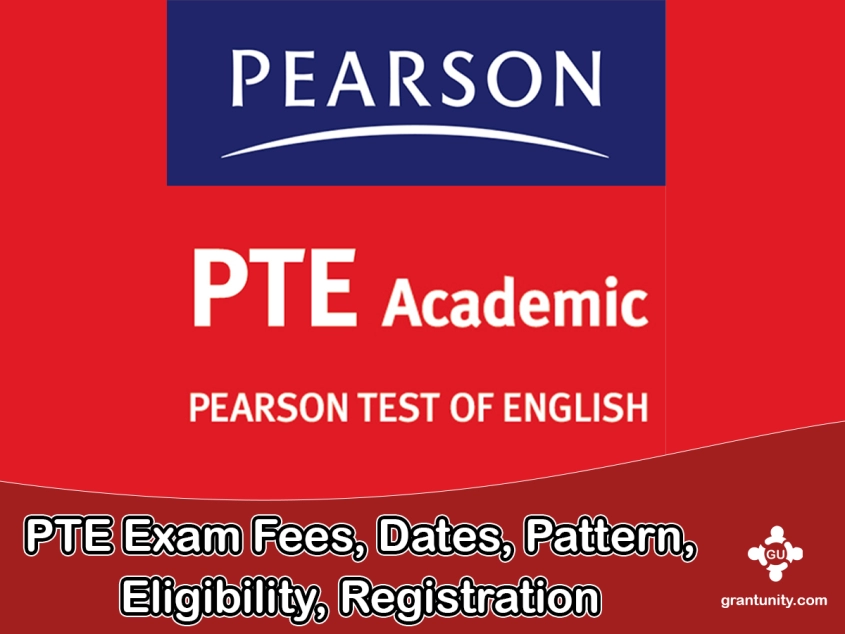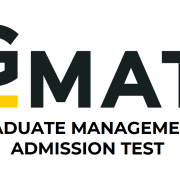PTE Exam 2024 | Fees, Dates, Pattern, Eligibility, Registration
Estimated reading time: 15 minutes
The Pearson Test of English (PTE) is a globally recognized assessment for measuring English language proficiency. The exam is designed meticulously to evaluate and quantify linguistic skills essential for effective communication in professional and academic settings. The PTE exam is comprehensive and is used to gauge the proficiency levels of individuals seeking international academic opportunities, employment in English-speaking workplaces or migration to English-speaking countries. The PTE exam is highly efficient, objective, and aligned with the practical demands of real-world language use, making it a valuable tool for individuals to validate and showcase their English language capabilities on a global scale..
Tailored with precision, the PTE exam is designed to meet the dynamic needs of a diverse range of candidates. It offers a robust assessment framework beyond traditional language testing, making it a trusted measure of language proficiency that is universally accepted and acknowledged by educational institutions, employers, and immigration authorities worldwide. The PTE plays a crucial role in opening doors for individuals to seamlessly integrate into English-speaking academic, professional, and social environments. It offers a reliable and fair evaluation of their language skills, making it a key facilitator for their success.

What is PTE Exam?
A computer-based standardized language readiness test known as PTE was created by Pearson Plc and is offered worldwide in collaboration with Edexcel. The full name of the PTE is Pearson Test of English, as was previously stated. The CEFR (Common European Framework of Reference for Languages) language proficiency levels are used in the test, and scores are reported on a scale from 10 to 90.
The PTE Academic test was explicitly created to evaluate and confirm language use and communication tasks in academic settings at the university level.
For this reason, the Pearson Test of English is accepted by all prestigious universities and institutions in the UK, Australia, Ireland, and New Zealand. The Graduate Management Admission Council, which owns and manages the GMAT, supports PTE as the ELT (English Language Test) due to its distinctive methodology for evaluating English-speaking abilities. PTE is accepted by thousands of academic programs in the USA. Many prestigious US institutions, including Yale University, Harvard University, NYU, Columbia University, and Stanford Graduate School of Business, will accept your PTE Academic score. Every day, the list gets longer.
The Secure English Language Test (SELT), which is required for anyone wishing to enter the UK with a VISA, is accepted by the UK VISA immigration office as PTE.
You can learn all there is to know about the PTE Exam in this video, including its key characteristics and other crucial information!

Why take the PTE Exam?
There are several compelling reasons to take the Pearson Test of English (PTE), and individuals opt for this exam for various purposes. Here are some key reasons why people choose to take the PTE:
1. Global Recognition:
- The PTE is widely recognized by universities, colleges, employers, and immigration authorities worldwide. Its global acceptance makes it a valuable credential for individuals seeking international opportunities in education, employment, or immigration.
2. Efficient and Quick Results:
- PTE is known for its efficiency and quick turnaround in providing results. Test-takers usually receive their scores within a few business days, allowing for timely applications to academic programs or job opportunities.
3. Computer-Based Testing:
- PTE is a computer-based test that provides a convenient and standardized testing experience. The computer-based format ensures fairness, objectivity, and consistency in the evaluation process.
4. Flexible Test Dates:
- PTE offers flexibility in test dates, allowing candidates to choose a schedule that aligns with their availability and deadlines for academic admissions or immigration processes.
5. AI-Driven Assessment:
- PTE incorporates Artificial Intelligence (AI) in its assessment process. This ensures objective and unbiased evaluation and provides a reliable measure of language proficiency.
6. Comprehensive Evaluation:
- The PTE exam assesses all language skills – reading, writing, listening, and speaking. This comprehensive evaluation gives a holistic view of a candidate’s English language proficiency, making it a well-rounded indicator of language skills.
7. Acceptance for Immigration:
- Many individuals take the PTE as part of the immigration process to English-speaking countries. Achieving a certain score on the PTE may fulfill language proficiency requirements for immigration purposes.
8. Academic Pursuits:
- The PTE is often a preferred language proficiency test for individuals seeking admission to international universities or academic programs. Many educational institutions recognize and accept PTE scores as part of their admissions criteria.
9. Professional Certification:
- Some professional organizations and certification bodies accept PTE scores as evidence of English language proficiency, especially for roles that require effective communication skills.
10. Real-Life Language Use:
- The PTE reflects real-life language use in academic and professional settings. This practical orientation ensures that individuals who perform well in the test are equipped for success in diverse English-speaking environments.
11. Fast Admissions Process:
- The quick availability of PTE results enables candidates to expedite the admissions process. This is particularly advantageous for those applying to academic programs with tight deadlines.
12. Objective Scoring:
- PTE’s automated scoring system ensures objectivity and consistency. Each test is scored similarly, minimizing the potential for subjective bias.
In summary, taking the PTE exam is a strategic choice for individuals looking to validate their English language proficiency efficiently and effectively. Whether pursuing education, career opportunities, or immigration goals, the PTE offers a reputable and globally accepted means of demonstrating language skills.
Types of PTE Exams
There are three (3) different PTE exam types offered globally:
1-PTE Academic Exam: It tests university-level English language usage readiness.
2-PTE General Exam: The exam tests readiness to use the International English language in work environments and other generic settings.
3-PTE Young Learner Exam: It applies to children in the age group of 7 to 12 years.
The PTE Academic Exam is the most well-liked of these three due to its appeal to the world’s student population.
PTE Exam Eligibility
If you meet the requirements listed in the PTE Exam eligibility list, you can take the test:
Age Restriction
There is a minimum age limit of 16 years; test-takers below 18 need parental consent.
Academic Qualification
There is no explicit minimum qualification; however, PTE Academic is primarily for anyone willing to study undergraduate or postgraduate courses.
Maximum Attempts Restriction
There is no restriction on the maximum number of attempts, but a 5-day gap between two tests is necessary.
PTE Exam Pattern and Syllabus
PTE is a computer-based standardized English language proficiency test and automatically scored. The PTE exam syllabus provides detailed information about the test’s objectives and method of evaluating candidates’ skills. For instance, PTE has three sections:
1-PTE Speaking & Writing
2- PTE Listening
3-PTE reading
The objective of PTE is not to cover English usage in any specific region. Being an ELT of global reputation and acceptance, PTE test design tries to assess and ensure that verified students succeed in universities and institutes of any country or continent.
It includes 20 different test item types with varying scoring criteria based on the communicative and enabling skills that are being evaluated. Even though both tests are part of the Speaking and Writing section, the Read Aloud test scores differ from the Summarize Written Text scores.
Section-wise item types:
| Section | Types of test items | Number of test items |
| Speaking & Writing | Read aloud Repeat sentence Describe image Re-tell lecture Short question Summarise written test Essay writing | 38 – 47 |
| Listening | Summarise spoken text MCQ – multiple answers MCQ – single answer Fill in the blanks Highlight correct summary Highlight incorrect word Select missing word Write from diction | 17 – 25 |
| Reading | Fill in the blanks MCQ – multiple answers MCQ – single answer Re-order paragraph | 15 – 20 |
PTE Academic test items are scored primarily based on two different scoring rules:
-CORRECT/INCORRECT
-PARTIAL CREDIT
| Correct or Incorrect | Partial Credit |
| These items are purely objective, having only one correct answer. You score (1 point) when you answer correctly. Otherwise, you score ‘0’. | These do not carry any single correct answer; the Score can be – CORRECT, PARTIALLY CORRECT or INCORRECT depending on 1) formal aspect and 2) response quality. |
-The formal scoring aspect determines whether the response complies with established word limits, time constraints, or other limitations.
-The response quality score of an answer for questions with partial credit is based on various enabling skills. These supporting abilities rely on the following:
| CONTENT | FORM |
| Response to a test item is off-topic or deviates from the topic specified. | An essay is less than the required word limit specified in a test item. |
-When scoring speaking and writing test items, CONTENT, as well as FORM, are taken into consideration. While FORM is concerned with the formal nature of the response, such as the word limit, CONTENT is the appropriateness of the response.
You will learn every last detail about the PTE exam in this video, including the price, syllabus, structure, scorecard, etc.
PTE Exam Duration
Any student will realize the importance of effective writing and speaking for participation in class and academic success. This is why these 2 skills are heavily emphasized in PTE. The Speaking & Writing section is the largest of the THREE sections regarding the number of test items, Score, and duration, which makes this emphasis clear.
PTE exam duration in section:
1-Speaking and Writing – approximately 72 to 93 minutes
2-Listening – approximately 44 to 61 minutes
3-Reading – approximately 31 to 41 minutes
The PTE exam lasts three hours, or 180 minutes, in total. Answers to 71 to 83 test items from THREE major skill areas are required.
PTE Results & Scores
PTE results are available 48 hours after the test date. You receive a PTE Score Card, which includes various scores for an in-depth analysis of your language abilities.
The Global Scale of English (GSE) divides standard reference levels for language proficiency into six groups based on the difficulty of completing a language task and various combinations of language tasks, is the framework PTE Academic uses.
PTE Academic Score Aligned with GSE levels:
Alignment of PTE Academic Scores with GSE Levels:
| GSE Levels | PTE Academic Score Range |
|---|---|
| C2 | 84-90 (Very Good to Expert) |
| C1 | 74-84 (Good to Very Good) |
| B2 | 58-74 (Competent to Good) |
| B1 | 42-58 (Limited to Competent) |
| A2 | 30-42 (Modest to Limited) |
| A1 | 10-30 (Extremely Limited) |
Students often wonder what a good PTE score is. However, the PTE exam does not have a passing score. Rather, your score indicates how well you are prepared to engage and perform in an English-language learning environment. To gain admission to a top university, a PTE Academic score of 78 or higher, classified as “Very High” in language proficiency, is required. Is it difficult to achieve a score of 85 or higher? Not quite. With adequate preparation, many students can attain these grades. Your PTE Score Card will include three types of scores graded on a scale of 10-90.
For example, you can have an Overall Score of 88 (yes, you can achieve this) with the following Communicative Skills Score –
Listening – 84
Reading – 90
Speaking – 89
Writing – 90
| Overall Score (indicative) | Communicative Skills Score (indicative) |
| 88 | Listening – 84 / Reading – 90 / Speaking – 89 / Writing – 90 |
Your overall Score is based on how well you did on the four communicative skills. Multiple communicative skills, such as reading and speaking, listening and writing, or other combinations, are frequently asked for on test items.
If you want to change your PTE overall score to its equivalent of IELTS, TOEFL and Duolingo, you can check the following free too: https://grantunity.com/ielts-to-toefl/
REMEMBER: your scores in these four communicative skills will significantly affect VISA and university applications.
Enabling Skills Scores like grammar, oral fluency, spelling, etc., are also included on your scorecard. These results assist test takers in identifying their language strengths and weaknesses so they can improve.
PTE Exam Fees
Every student taking the test must submit a PTE registration fee, with the exam cost differing across countries, typically ranging from US$185 to US$275. Registration can be completed up to 48 hours before the test. In the case of Indian students, the PTE Standard Fee is ₹11,610, the PTE Registration fee (inclusive of taxes) is ₹13,300, and a late registration fee of ₹13,965 applies when registering 48 hours prior to the test.
PTE Cancellation Fee – If test takers cancel their test registration at least 14 calendar days before the PTE exam dates, they will receive a full refund of their PTE fees. They receive a partial refund of 50% of PTE fees if they cancel between the thirteenth and the eighth full calendar day. The booking fee is forfeited after that.
PTE Exam Registration
Registering for the PTE exam is simple and entirely online. Once you are on the official Pearson PTE website, adhere to these easy instructions:
- Create an account with Pearson by clicking on Sign Up
- Log into my Account and Set Up the Profile
- Complete the Booking Questions
- Find the preferred PTE exam appointment (Test center, date, and time slot)
- Review your PTE booking details
- Make the payment and finalize your PTE exam booking
What are PTE Exam Dates?
You can check the available PTE exam dates once you register and log in to the PTE website. PTE exams can be scheduled up to 24 hours in advance. In that regard, it is very useful. Additionally, the AI-driven testing technology used for the PTE exam, which is free of human unfairness, has increased interest among international students.
Currently, a finite number of seats are available in each test session at each testing location. Therefore, try to reserve your seat as soon as possible.
PTE Exam Preparation
A PTE score of 78 or higher is required for admission to any reputable university. You must have the necessary preparation to reach that proficiency level.

PTE Exam Preparation
Preparing for the Pearson Test of English (PTE) involves a strategic approach encompassing various aspects of language proficiency. Here are some key tips to help you prepare effectively for the PTE exam:
1. Understand the Test Format:
- Familiarize yourself with the structure of the PTE exam, including the different sections and types of tasks in each section. Understanding the format will help you manage your time and confidently approach each task.
2. Practice Regularly:
- Regular practice is crucial for success in the PTE. Utilize official PTE practice materials and sample tests to get accustomed to the types of questions you will encounter. This will also help you identify your strengths and weaknesses.
3. Improve Time Management:
- The PTE is a timed test, so effective time management is essential. Practice completing tasks within the allocated time to ensure you can pace yourself appropriately during the exam.
4. Enhance Language Skills:
- Improve your overall language skills, including reading, writing, listening, and speaking. Read various texts, practice writing essays, listen to English audio materials, and engage in spoken English activities to build a strong foundation.
5. Use Online Resources:
- Take advantage of online resources such as PTE preparation websites, forums, and official PTE practice materials on the Pearson website. These resources provide valuable insights, tips, and additional practice materials.
6. Focus on Weak Areas:
- Identify your weaker areas through practice tests and allocate more time to improve those specific skills. Whether it’s vocabulary, pronunciation, or comprehension, targeted practice can lead to significant improvement.
7. Simulate Test Conditions:
- Practice under conditions that simulate the actual test environment. This includes using a computer for practice tests, adhering to time limits, and minimizing distractions. Simulating the test conditions can help reduce anxiety on the exam day.
8. Seek Feedback:
- If possible, seek feedback on your performance from teachers, tutors, or language exchange partners. Constructive feedback can provide valuable insights and help you refine your skills.
9. Work on Pronunciation:
- Pay attention to your pronunciation, especially in tasks like “Repeat Sentence” and “Describe Image.” Clear and accurate pronunciation contributes to a higher score in the speaking section.
10. Stay Updated:
- Keep updated on any PTE exam format changes or scoring criteria. This ensures that your preparation aligns with the current requirements.
11. Take Mock Tests:
- Taking full-length mock tests is an excellent way to simulate the exam experience. It helps you build endurance, refine your strategies, and identify areas needing additional attention.
12. Relax Before the Exam:
- In the days leading up to the exam, get adequate rest and avoid last-minute cramming. Relaxation and a clear mind contribute to better performance.
Following a structured and consistent preparation plan can enhance your confidence and proficiency, increasing your chances of success in the PTE exam.
Frequently Asked Questions: PTE Exam 2024
The PTE Exam is a computer-based English language proficiency test designed to assess the speaking, writing, listening, and reading skills of non-native English speakers.
The PTE Exam consists of three main parts: Speaking and Writing, Reading, and Listening. Each part assesses different language skills.
The total duration of the PTE Exam is approximately 3 hours.
The PTE Exam uses an automated scoring system that evaluates responses based on predefined criteria. Scores range from 10 to 90, with higher scores indicating higher English proficiency.
PTE Exams are administered at Pearson test centers worldwide. Additionally, an online version of the exam is available for remote testing.
You can register for the PTE Exam on the official Pearson website. Create an account, choose a test center select the online option, and follow the registration steps.
A valid, government-issued ID with a recognizable photo and signature is typically required. Check the official guidelines for accepted ID types.
Exam fees can vary by location. Check the official PTE website or contact Pearson for the current exam fee in your region.
Yes, you can select multiple institutions to receive your PTE scores during the registration process.
PTE Exam results are usually available within 48 hours of completing the test. You can access your scores online.








Leave a Reply
Want to join the discussion?Feel free to contribute!